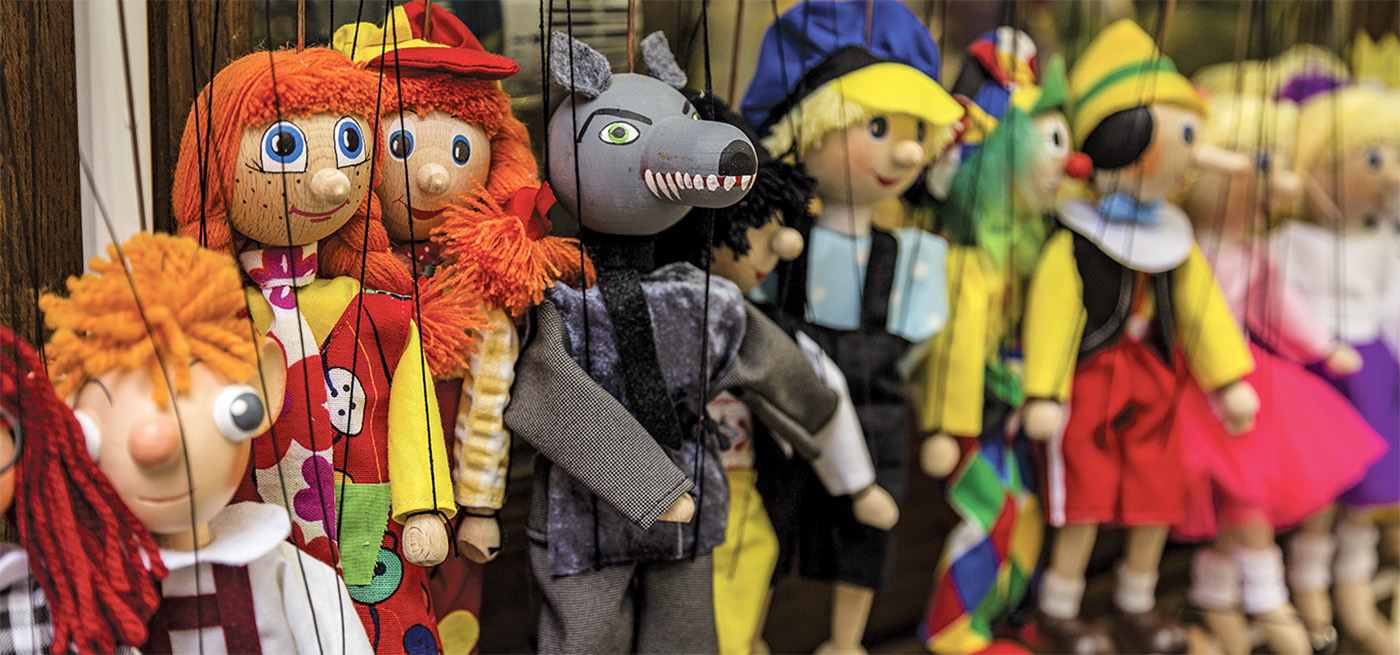Shanghai International Studies University (SISU) – July 10, 2015
Czech Puppets: From Hand-Made to Mass-Produced
By Yijing Dai
PRAGUE — In a small marionette shop near the Charles Bridge, Prague, Czech Republic, Františka Nekvasilová, a skillful designer and marionette creator is stitching a costume for the hand-made marionette. She works in the this 22-year-old shop called Truhlář Marionety. The marionettes it sells and displays are designed and created by the artisans just like Františka Nekvasilová, who preserves the tradition, at the same time is challenged by cheaper, machine-made competition.
Czech marionettes have been a part of Czech tradition since the middle of the 18th century, when Czech puppeteers roamed Central Europe to entertain crowds and tell stories. At the end of the 18th century and the beginning of the 19th century, Czech traditional puppetry developed into a valued art form.
“These marionettes has strong impact on our people, because under German rule, it was impossible to speak Czech. You know at that time there were no Internet, no TV. And the people played marionette, speaking Czech. It’s like a little underground. And very soon, every family had their own marionette and played for children or for public: sometimes jokes, sometimes deep thoughts hidden under jokes.” By elucidating the origins and traditions of Czech marionettes with both enthusiasm and solemn, Františka Nekvasilová shows that Czech marionette is an epitome of the emotional bond between people and a certain kind of art: a patriotic art form originates from the appeal of folk political expression.
But the situation of puppetry has been going through a period of irreversible change. Although local theaters will buy marionettes for performance, tourists are still the main customers of these traditional handcrafts. “This shop is 22 years old, and we try to keep our tradition. Sometimes teachers and doctors prefer marionette during communication with children. The first purpose was theater and now it became like a piece of art for decoration. It seems to me that the main purpose is for decoration according to my own experience with costumers.”
Tourism and economic integration urge the amount of crafts but there’s no guarantee that the quality will be proved. The material of traditional handcrafts are usually wood and cloth while modern crafts also use chemical material like plastic.
According to Tereza, a staff of one souvenir shop, the plastic marionette has lower price as traditional wood one. Workmanship is another important element which decides the price. The price of a normal sized plastic marionette ranges from 7-15 Euro. But a delicate wood marionette can cost about 300 Euro.
“Handmade crafts became more and more rare, because there are a lot of machines and handmade crafts need the inner fire of design.” In all parts of modernized world, including China, industrial mass production heavily hit the core of the handwork culture: not only the demanding skills, but also the life and soul which is instilled into the product. “I am always afraid that one day, traditional handmade crafts will only be seen in the museum.” Františka Nekvasilová shrugged. There was no grief in her expression, only deep resignation.
However, traditional handmade crafts are none the less supported by passionate people. Like Františka Nekvasilová has mentioned: “My boss is fighting for keeping the tradition. It’s a very nice thing because if you see some marionettes in the town, it’s very often mass products.”
Denisa Bartošová, shop assistant in a store specializes in dealing with fabric toys, said that hand-made fabric toys are better for children because of the pliability. “We cooperate with 60 different artists and we have also our own production.” All the art objects in this about thirty square-meter shop are sewn by only three woman. One thing is for sure: love and persistence of artists and workers hold up the existence of traditional crafts.
A small marionette workshop in Prague named PAVEL TRUHLÁŘ teachs people how to create and operate marionettes. “We provide courses and cooperate with schools in long-term projects about puppet shows.” said Zdenka Owenová, manager of the workshop. The schools are specialized schools established to teach the students of how to do hand works. “It’s a branch of classical marionette theater and the branch of high education.”
Any kind of traditional craft is changeable, inheritable and qualificative. Tradition puppet shows have told stories of all walks of life one after another, claiming the patriotism and belongingness under oppression. Looking at the figure of horsemen and clowns as well as modern celebrities, movie stars, and game characters, it is thought-provoking of imagining what modernized tragicomedies it will lay before us.
 Education
Education